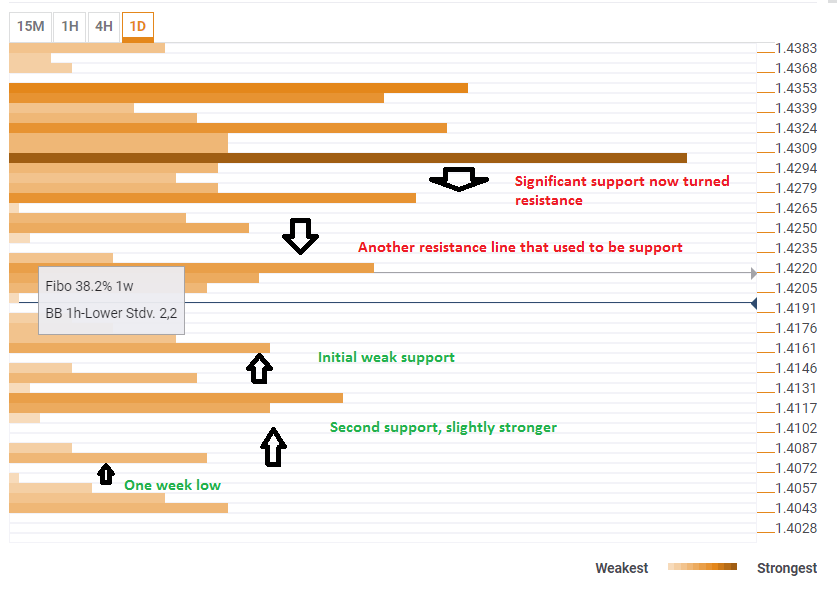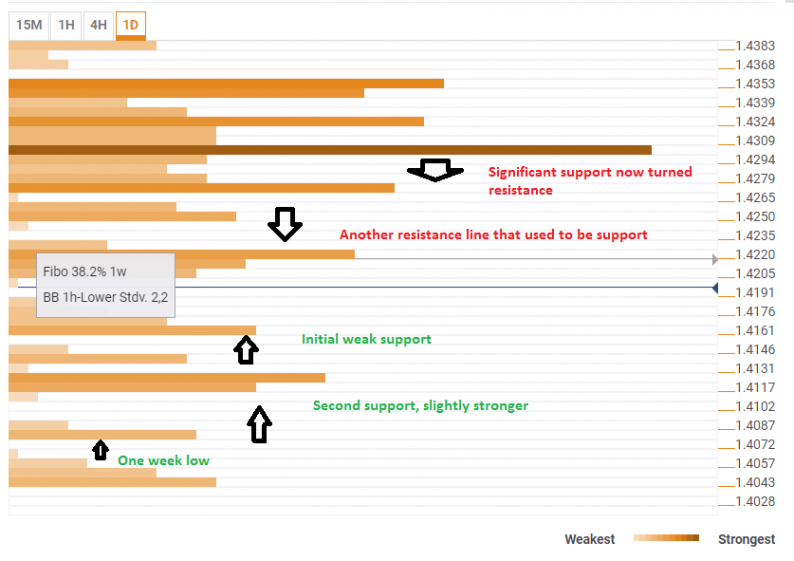The Technical Confluences Indicator shows that on its way down, the GBP/USD broke below several important clusters of technical support lines. And at current levels under $1.4200, there are very few support lines to the downside. It was triggered by weak inflation.
The pair tumbled nearly 100 pips and took down a dense confluence of levels around $1.4270: the SMA100-1h, the SMA10-15, the Bolinger Band 1h-Lower, the 1h low, the 4h-high, and the Pivot Point one-month R1.It also dropped below important support around $1.4217 where we see a congestion of the Fibonacci 28.2% one-week, the BB 1h-Lower, the SMA50-4h, and the SMA200-1h.
Both these clusters now turn into resistance.
And where can the pair find support? At around $1.4150, we find the Pivot Point one-day S1, the Fibonacci 61.8% one-week, and the SMA10-one-day.
Another level of support is at $1.4114, which consists of the Fibonacci 23.6% one-month and the Pivot Point one-week S1. These are not such strong lines and a drop to the one-week low at $1.4070 cannot be ruled out.
Here is how it looks:

Confluence Detector
The Confluence Detector finds interesting opportunities using Technical Confluences. The TC is a tool to locate and point out those price levels where there is a congestion of indicators, moving averages, Fibonacci levels, Pivot Points, etc. Knowing where these congestion points are located is very useful for the trader, and can be used as a basis for different strategies.
This tool assigns a certain amount of “weight” to each indicator, and this “weight” can influence adjacents price levels. This means that one price level without any indicator or moving average but under the influence of two “strongly weighted” levels accumulate more resistance than their neighbors. In these cases, the tool signals resistance in apparently empty areas.












Leave A Comment